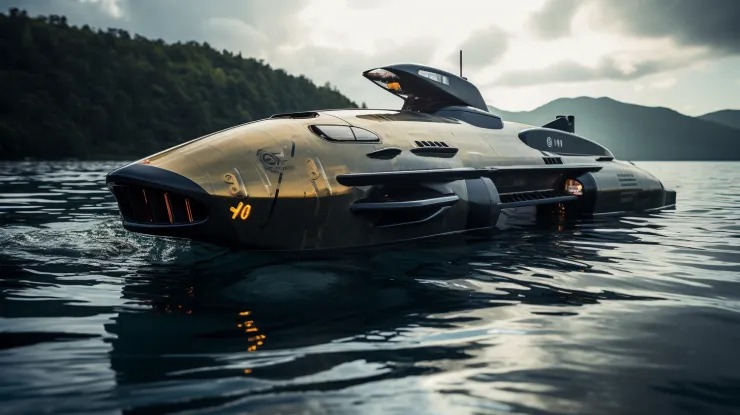Introduction
Autonomous ships are of great interest, especially in the wide open seas. However, operating autonomous surface vehicles in narrow channel waters poses a particular challenge due to the requirement for reliable obstacle detection and avoidance. This paper details the pioneering work of Kim and his team, focusing on the development and field testing of an autonomous navigation system for a passenger boat in narrow and complex environments.
Hardware and Sensors
The boat subject to this study was equipped with advanced sensors such as GPS, radar, LiDAR and stereo cameras. These enhancements were critical to increase position accuracy, situational awareness and detect navigation cues such as ship navigation marks along the route.
Autonomous Navigation Algorithm
The core of the autonomous system lies in a complex navigation algorithm. The algorithm seamlessly integrated perception, path planning and control mechanisms. In perception, sensor data such as GPS, radar, LiDAR and stereo camera inputs were combined to form a comprehensive situational awareness map. Path planning involved a hybrid approach, using predetermined waypoints for stability and a model-based path planner to adapt to the dynamic change of the environment. The control component implemented the line-of-sight guidance system to guide the boat along the designated route.
GPS (Global Positioning System)
GPS is a satellite-based navigation system for determining a user's position on Earth. GPS receivers determine the user's position by receiving at least four satellite signals. These signals contain timestamps sent by each satellite. By calculating the time delay between these signals, the GPS receiver determines the user's position, speed and altitude.
Radar (Radio Detector and Radio Emitter)
Radar is a system that detects distant objects using the return signals of electromagnetic waves from reflected objects. The working logic of radar is to send high-frequency electromagnetic waves to objects and to obtain distance, speed and orientation information by receiving the reflection of these waves. This information is processed by an algorithm integrated into a radar system to determine the position and movement of the target object.
LiDAR (Light Detection and Ranging)
LiDAR is a sensor technology that determines the distance and position of distant objects using laser beams. LiDAR sends laser beams into an environment and these beams hit objects and return back. The time stamps of the reflected beams provide distance measurement. At the same time, the width and intensity of the laser beams can be used to create detailed 3D maps.
Stereo Cameras
Stereo cameras are a system with two separate cameras, similar to the working principle of the human eye. These cameras view the same scene from different angles and depth information is obtained by using the parallax (distance-dependent image change) between these images. Stereo cameras are used to determine the distance and position of objects, especially in obstacle detection and 3D mapping.
Pohang Channel Dataset
The field test in Pohang, South Korea, involved the collection of a comprehensive data set called the "Pohang Channel Data Set". This dataset included narrow channel waters up to 15 metres, inner and outer harbours ranging from 50 to 100 metres, and nearshore to offshore transits. The dataset includes sensor readings, vessel performance metrics and environmental conditions, providing a valuable resource for further analysis and comparison in autonomous navigation research.
Conclusions and Future Perspectives
The study demonstrated the system's ability to autonomously adapt to various environmental conditions, showing its potential for use in real-world scenarios. However, additional testing in dynamic and harsh environments such as heavy ship traffic is needed to verify its robustness.
Conclusion and Acknowledgements
This research is an important step towards the development of autonomous surface vehicles capable of reliably travelling on complex waterways. The authors recognise that further testing and refinements are needed to adapt the system to diverse and dynamic marine environments.
References
Pohang Canal Dataset: A Multimodal Maritime Dataset for Autonomous Navigation in Restricted Waters
Dongha Chung, Jonghwi Kim, Changyu Lee, Jinwhan Kim
The AI Act Grand Challenge shows how autonomous robots will be regulated
EMMIE HINE , YASAMAN YOUSEFI , PARISA OSIVAND DIRK BRAND -KHOLOFELO KUGLER AND PIER GIORGIO CHIARA
Autonomous boat navigation in the real world AMOS MATSIKO


